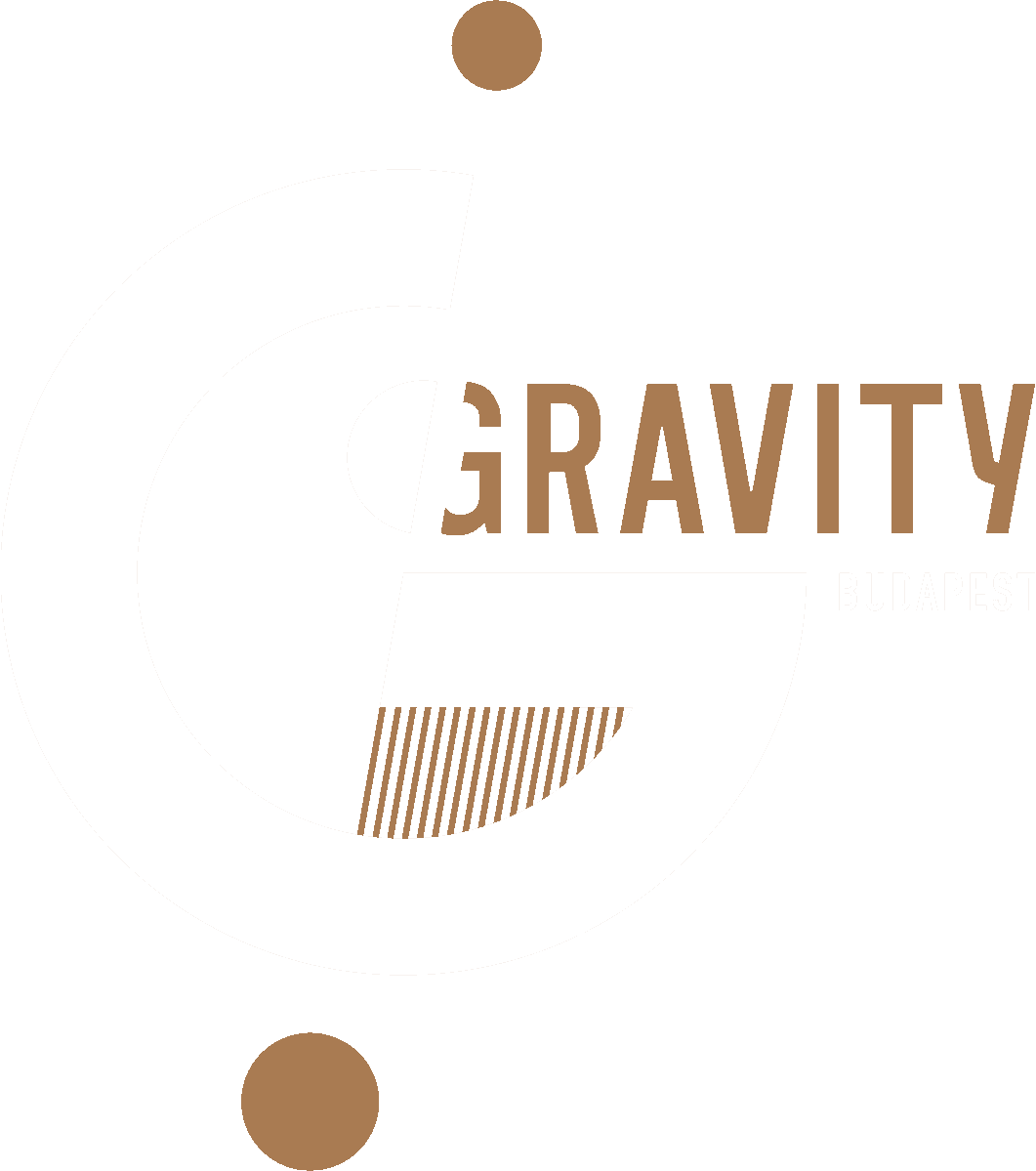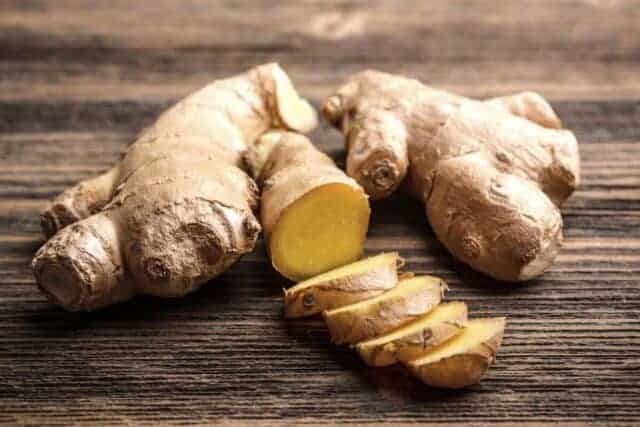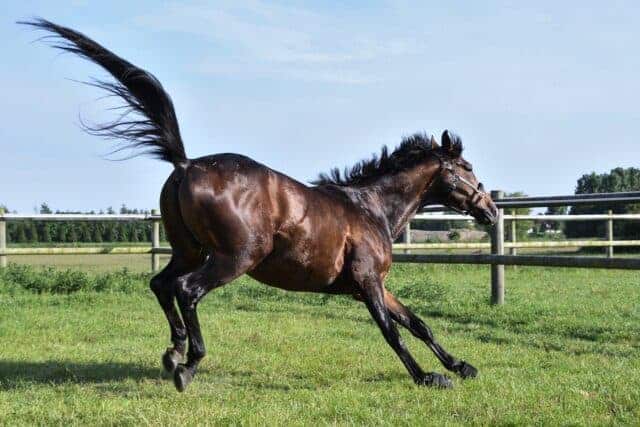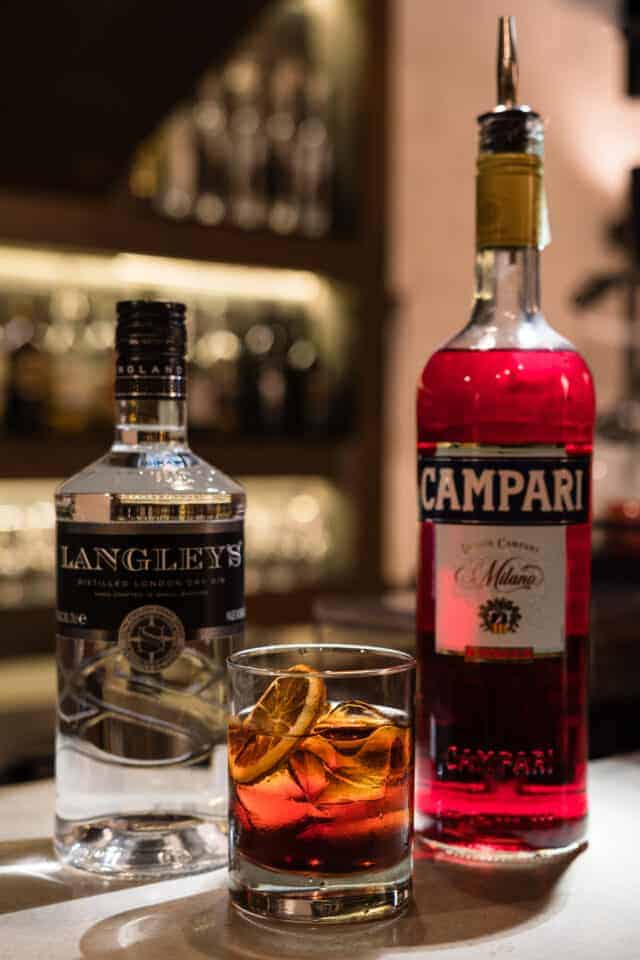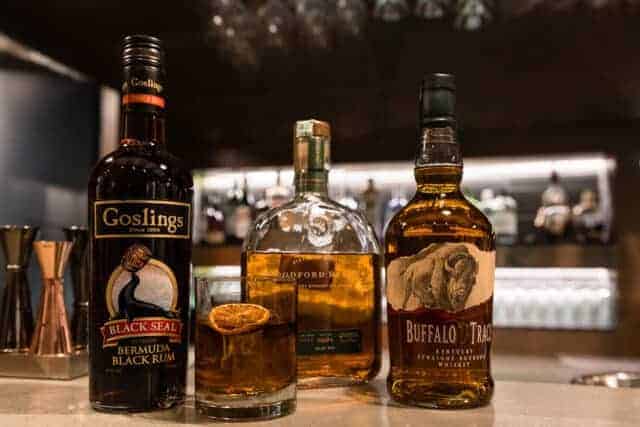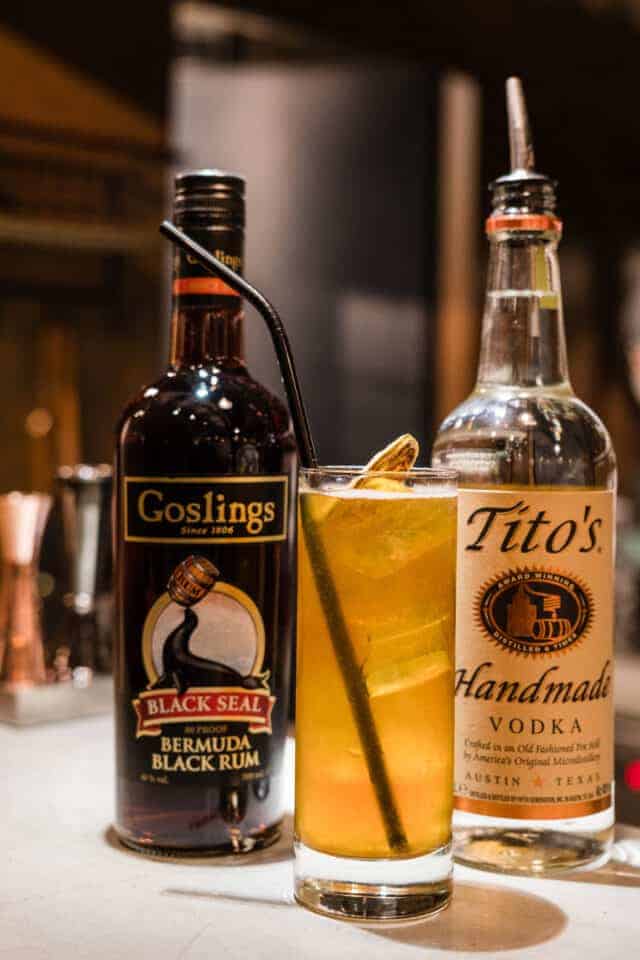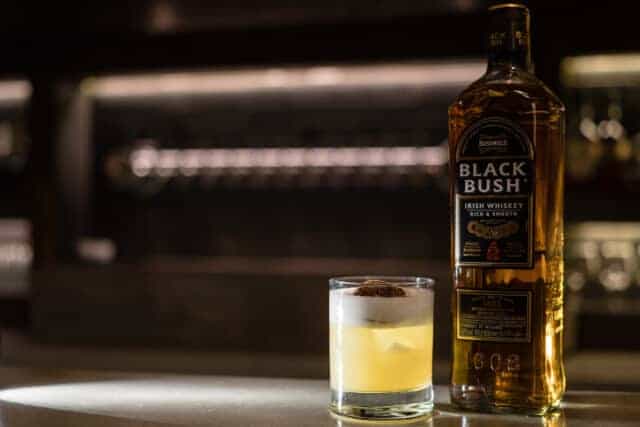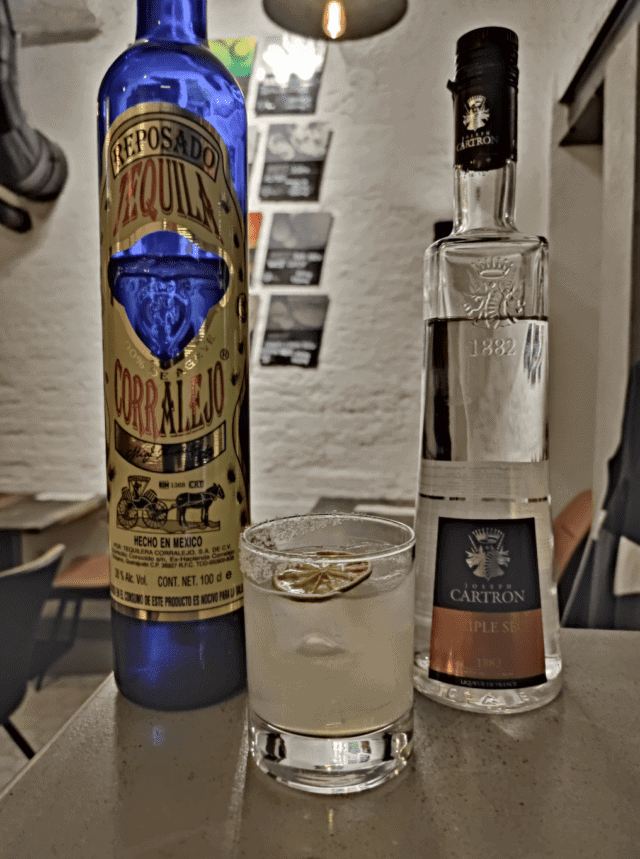Did you know that we have fifteen cocktails on our Budapest taproom menu?
That’s right, here they are:
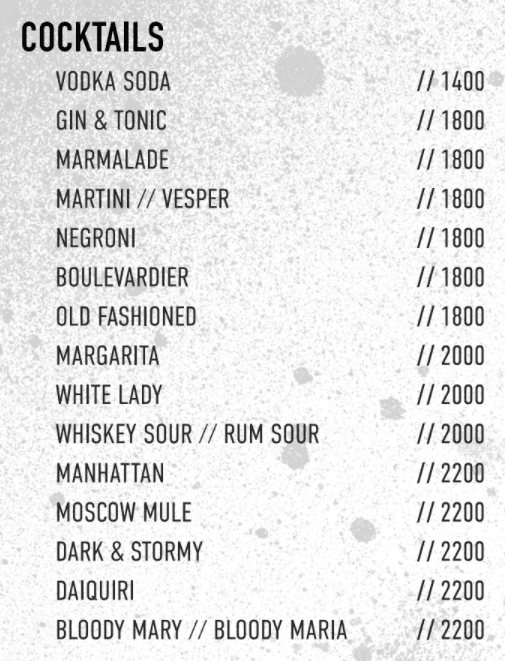
And there’s a good reason why (beyond the fact that we love them) — cocktails are the perfect complement to our wide range of beers!
But before trying them all to find your favorite pre or after-beer drink, you should brush up on your cocktail-related knowledge by reading through this post. You’ll surely impress your mates with the things you’re about to learn:
- The cocktail’s etymology and history
- Eight fun facts about cocktails
- Our six absolute favorite mixed drinks and how we prepare them in the Gravity taproom.
Let’s dive in.
The Origin of the Word “Cocktail”
The first mention of the word “cocktail” dates all the way back to 1798, when it appeared in the London-based Morning Post and Gazetteer. But it was left undefined until May 13th, 1806, when the editor of The Balance and Columbian Repository replied to a letter from a confused reader. These are his exact words:
Cock-tail, then, is a stimulating liquor, composed of spirits of any kind, sugar, water, and bitters—it is vulgarly called bittered sling, and is supposed to be an excellent electioneering potion, inasmuch as it renders the heart stout and bold, at the same time that it fuddles the head. It is said also, to be of great use to a democratic candidate: because, a person having swallowed a glass of it, is ready to swallow any thing else. — Harry Croswell
But where does this slightly dirty-sounding word originate from?
The truth is that nobody knows for sure. All we have is theories, some more probable and some more outlandish…
And, yes, ginger has something to do with it. But in which theory?
Let’s find out and rank eight of them in order of credibility, from the most feasible to the most likely to be a drunken invention:
1. According to spirits historian (and yes, that’s a real job, jealous much?) David Wondrich, the word “cock-tail” was a slang term for an alcoholic drink supplemented with ginger in the late 1700s and early 1800s. And it owes its name to the strange (to say the least) practice of putting a ginger suppository up a horse’s rear end before trying to sell the animal. Traders would do this to ‘liven up’ an old horse and get it to raise (or cock) its tail, as this was seen as a sign of a spirited, healthy animal.
Alcoholic ginger drinks had the same ‘lively’ effect on people, so the name stuck. But luckily for us, a hangover is the worst thing a cocktail can do to humans!
2. Colonial-era tavern-keepers would mix the last drops of booze (known as tailings) from all of their nearly-empty casks into a single barrel and sell it off cheaply by pouring it straight from the barrel’s spigot (colloquially called a cock). Patrons called this often unsightly mix “cock tailings,” a name that might have given origin to the modern word.
3. The term “cock-tail” referred to a mixed breed horse with a docked tail that sticks up — like a cock’s tail. This ‘mixed’ meaning then spread to alcoholic drinks that weren’t made from pure spirit.
4. It simply refers to the restorative power of bitters, spices, and sugars that can “cock your tail” or, in other words, perk you up like a rooster. This is backed up by cocktails beginning their life as morning (rather than evening) drinks.
5. The word comes from New Orleans, where famous apothecary Antoine-Amedée Peychaud served mixed Cognac drinks in eggcups, known in French as “coquetier.” This term quickly caught on as the beverage’s name, and the original French word was first anglicized to “cocktay” and finally to “cocktail.”
6. Cock-ale was a spiced old English ale brewed with a parboiled, skinned, and gutted cock mixed in. Definitely not vegan-friendly. This term then spread to other mixed drinks and morphed slightly into “cocktail.”
7. The word was invented by English sailors that, while in Mexico, noticed that locals mixed drinks with a root called “cola de gallo” in Spanish, a.k.a. “cock’s tail” in English. They then brought the name to England, from where it spread quickly to the USA and the rest of the world.
8. It derives from an Aztec princess named Xochitl, which prepared a mixed alcoholic drink for a European guest. Her name was corrupted and transformed into “cocktail” by her foreign visitors.
Which one do you believe?
Just pick your favorite because no one can prove you wrong (for now), even though the first option (the horse’s ass one, in case you forgot 😃) is the one with the most evidence behind it.
Alright, so now that you know where the word “cocktail” comes from, it’s time to take you through its nearly 225-year-long history.
A Brief History of the Cocktail
What you already know:
1798 — The first mention
1806 — The definition
What came before:
1500s (and earlier) — Indians prepared and drank punches (large bowls of spirits mixed with juice, spices, and flavors), a precursor to the modern cocktail.
1700s — This tradition spread to Britain and the rest of the British colonies, where punch houses started popping up.
What came after:
1810s onwards — Ice became more widely available in warm climates thanks to the efforts of Frederic “Ice King” Tudor.
1838 — The first cocktail with a recorded name, the Sazerac, was invented in New Orleans by the same Antoine-Amedée Peychaud mentioned above. This drink is now the official cocktail of the city.
1862 — The first bartender guide was published and created much stir.
1860s onwards — A standardized set of cocktails spread across bars and pubs in the USA and Europe.
1917 — The first cocktail party took place in St. Louis, Missouri, at the residence of Mrs. Julius S. Walsh Jr.
1919 – 1933 — Prohibition in the USA provided a launching ramp for cocktails, and they became insanely popular in illegal bars known as “speakeasies.” Why? Because mixed drinks were a fantastic way to hide a beverage’s alcohol content and mask low-quality, quickly distilled liquors (mainly gin and vodka as these didn’t require extensive aging).
1940s and 1950s — Tiki culture took over the bar scene, and rum-based cocktails gained popularity.
1960s to 1980s — Interest in cocktails dwindled as low-quality, mass-produced bottled cocktails flooded the market. Other types of alcohol or drugs gradually replaced their consumption.
1990s to today — Cocktails made a surprising comeback thanks to the work of an ambitious group of barmen (mainly in New York), and we’re now in full swing of a “mixology renaissance.”
Pretty cool stuff, right?
Well, wait until you read these fun facts:
Eight Fascinating Cocktails Facts
1. The first mention of a cocktail-like drink dates back to Ancient Rome when Emperor Nero’s physician mentioned a medicine made from wine, alcohol, and bitters back in 77 A.D.
2. Despite what the world’s most famous secret agent says, many bartenders are of the idea that a Martini should be stirred and not shaken because it’s a booze-forward drink that deserves perfect clarity and a silky mouth-feel.
3. The father of Mixology is Jerry Thomas (1830-1885). He wrote the first book about the subject, “How to Mix Drinks, or the Bon Vivant’s Companion,” in 1862. This book is still sold nowadays and is widely used by bartenders as a classic go-to guide for recipes and techniques.
4. The Margarita is the most popular cocktail in the USA, where a ridiculous 185,000 Margaritas are drunk every hour. That’s over 4 million per day!
5. There’s actually an “official list” of cocktails. It’s curated by the International Bartenders Association (IBA), and its made up of 77 cocktails broken down into three categories: Unforgettables (like the Old Fashioned and the Negroni), Contemporary Classics (like the Bellini and the Cosmopolitan), and New Era Drinks (like the Dark’ N’ Stormy and the Spritz Veneziano).
6. The world’s most expensive cocktail is the Diamond Is Forever, and it costs a mind-boggling US$22,600 in Tokyo, Japan! You’re definitely better off dropping by our taproom! 😜
7. Absinthe is by far the most banned spirit in the history of alcohol because it was seen to be a dangerous, hallucinogenic drink. However (luckily), this was just a myth, and absinthe has been re-legalized over the last couple of decades.
8. Modern cocktails have a far simpler definition than the original 1806 definition we shared above — it’s simply a beverage made from two or more ingredients, including at least one that contains alcohol.
Now let’s get to the serious stuff (that you can actually drink right now):
Our Six Favorite Cocktails and What They’re Like Here at Gravity
Negroni
Notes: sweet, bitter, citrus, fruit, herbal, and refreshing
Legend has it that this cocktail was born when French General Pascal Olivier, Count de Negroni, asked a Florentine bartender to stir his favorite drink, an Americano, a little stronger than usual.
Its most basic form has 3 ingredients: gin, red vermouth, and Campari.
We make our Negronis unique here at Gravity by using Langley’s, no. 8 Gin. This exceptional gin’s name refers to two things: 1) it’s made with 8 botanicals, and 2) it was the eighth candidate on the final shortlist of twelve different ABV percentages.
And since we’d like to keep our vermouth shrouded in a bit of mystery, all we’ll say is that it was the favorite vermouth of Gianni Agnelli, the founder of Fiat and one of the most famous Italians of the 20th century.
Last but not least, Campari is the world’s most famous bitter and it’s prepared with alcohol and extracts of herbs and fruits (i.e., bitter orange).
Old Fashioned
Notes: barrel aging, cherry, and spice
This is one of the world’s oldest cocktails, but luckily for us, it’s not showing any signs of age yet!
Despite it being straightforward to prepare, an Old Fashioned has very complex notes on the nose and the plate. The secret lies in using a few drops of bitters to make the base spirit (which could be bourbon, rye whiskey, or even rum and brandy) far more exciting.
We prepare ours with either Buffalo Trace Bourbon, Woodford Rye Whiskey, or Gosling’s Black Seal Rum, and naturally, we’ve added a little signature Gravity twist to the original recipe. You have to try it to find out!
Dark & Stormy / Moscow Mule
Notes: ginger, spice, and citrus
It’s no accident that we’ve mentioned these two cocktails on one line — they only have one significant difference: their base spirit.
A Moscow Mule is made with vodka, lime, and ginger beer, while a Dark & Stormy swaps out the vodka for rum.
When looking for suitable soft drinks for our cocktails, our primary consideration was that they be in aluminum cans rather than glass bottles. But unfortunately, we couldn’t find a single ginger beer that suited our taste profiles. What was left for a brewery to do?
Make our very own, obviously! 🍺
Our Gravity ginger beer is naturally fermented, which means that we take advantage of the bacteria and yeasts naturally found in ginger and avoid adding any manufactured yeast. The end result is a strongly ginger-flavored, slightly spicy beverage that’s perfect in a Moscow Mule made with Tito’s Vodka and in a Dark & Stormy made with Gosling’s Black Seal Rum.
Bloody Mary
Notes: funk (the good kind), smoke, vegetal, and spice
A Bloody Mary is the undisputed king of cocktails in two (important) situations:
- When you already have a hangover
- As a closing drink to avoid a hangover the next day
It’s said that a French bartender named Fernand Petiot invented this cocktail in 1921 when he was working in the Parisian “New York Bar,” a usual hangout of none other than Ernest Hemingway.
It’s traditionally made with vodka, tomato juice, and various spices, but don’t worry: we’ve managed to infuse this cocktail with a bit of a Gravity twist!
Since one of our main goals at the bar counter is to show off the wonders of brewing and fermentation, the idea to ferment our own tomato juice came only natural. And if underground fermentation by itself isn’t enough to make it enjoyable, then the addition of one Szati Chili’s smoky and spicy sauces is sure to dot the i’s and cross the t’s.
If you visit us here on Lónyay utca, it’s simply a must-try!
Whiskey Sour
Notes: sour, barrel aging, and citrus
Not much is known about the Whiskey Sour’s origin, but it’s generally supposed that Elliott Stubb first mixed it in 1872 in Chile, of all places.
This is one of those cocktails that we think is already “as good as it can get,” so we haven’t played around much with its original recipe — you’ll get a classic Whiskey Sour here at the Gravity taproom.
This drink becomes sour thanks to the addition of lime juice, which we then sweeten back with a dash of syrup and decorate with whipped egg white foam.
It’s the perfect refreshing cocktail for a warm summer day.
Margarita
Notes: citrus, smoke, salt, and refreshing
According to David Wondrich (you know the dude with the insanely cool job as a spirits historian), the Margarita probably started off life as a variant of the “brandy daisy.” The name Margarita (Spanish for daisy) and the very similar ingredients, albeit with tequila instead of brandy, give this theory serious legitimacy.
As for its exact birthplace, this cocktail is a bit like a comic book character — it has an infinite amount of origin stories, which we won’t get into because we don’t have all day. Remember, we’re running a brewery and a taproom here. 😉
There are several variations and recipes of the Margarita (from flavored Margaritas to the “Coronarita”), but we love the original, which is ingenious in its simplicity: tequila, triple sec, and lime.
That’s why we decided to stick to this classic recipe and honor it with the best possible ingredients — Corralejo Reposado Tequila, Joseph Cartron Triple Sec, and a dash of lime salt on the rim of the glass.
Final Thoughts
Well, that’s everything for today, there are just two things left for you to do:
- Sign up for a pub quiz where you can rock it with your newly-found cocktail knowledge.
- Drop by Lónyay u. 22, and test out our delicious mixes for yourself.
Thanks for reading, and see you soon! 🍸🍹
